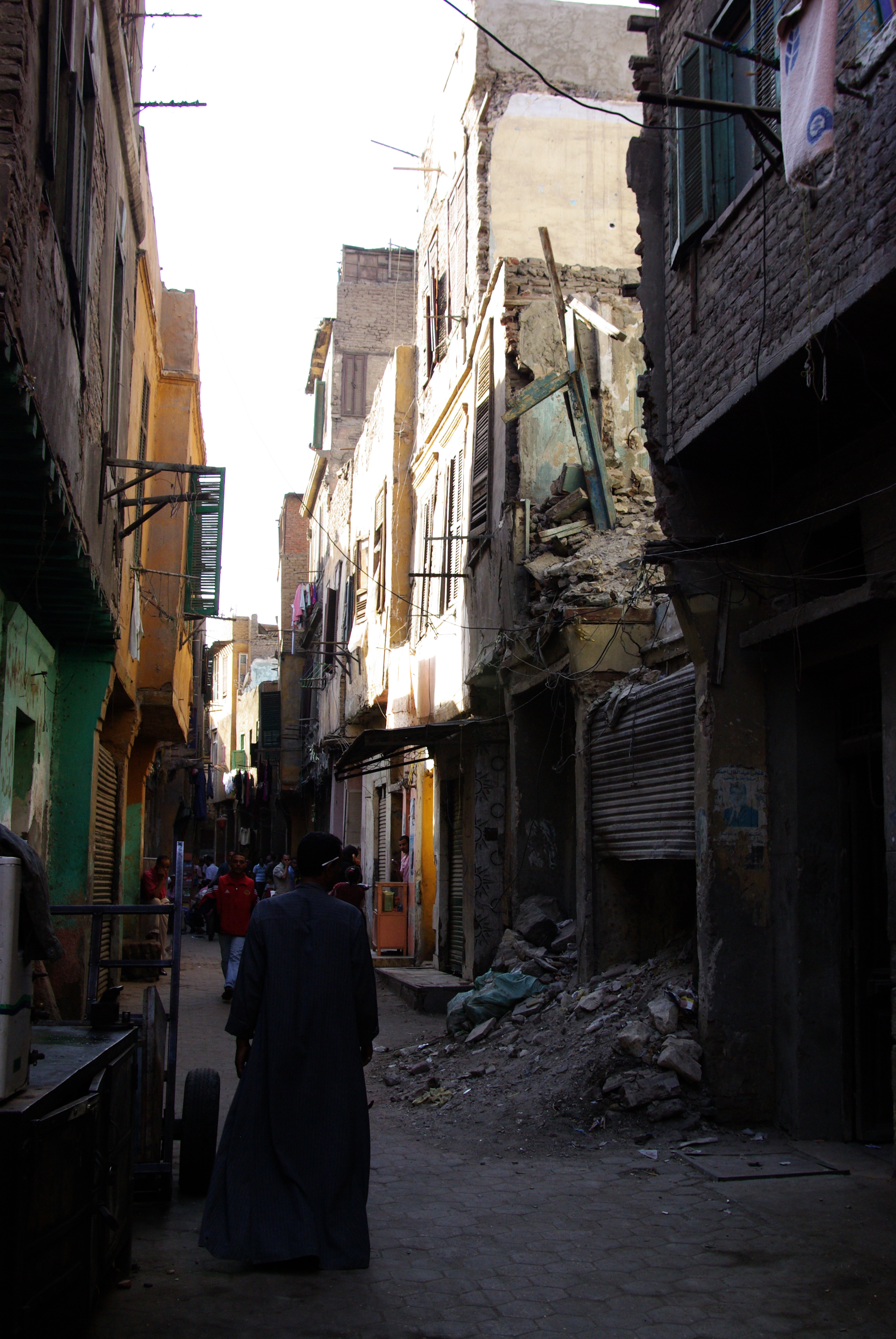Arab Politics and Urban Planning

…No matter how different the reasons may be, the result is always the same; the scandalous alleys and lanes disappear to the accompaniment of lavish self-praise from the bourgeoisie on account of this tremendous success, but they appear again immediately somewhere else…The same economic necessity which produced them in the first place, produces them in the next place.
Friedrich Engels, The Housing Question(1872)
It is somewhat depressing how well these passages, written by Engels a hundred and forty years ago, still can be applied to the global city now, including the MENA region. The renowned geographer David Harvey argues that this continual “regeneration” of the urban landscape by urbanization is a symptom of the capitalistic need to reinvest and absorb surplus capital, extracted from the working classes, yet controlled only by a few. He argues that urban social movements in this context seek “greater democratic control over the production and utilization of the surplus. Since the urban process is a major channel of surplus use, establishing democratic management over its urban deployment constitutes the right to the city.”
With the phenomenon of globalization, this process has been replicated in the Arab city. The planning process is far from innocuous, being described as “designing civil encounter.” It is social control that is the crucial factor here. Cities are the spaces of concentrated discourse, dense interaction and, consequently, often the very cause for social movements.
Arab cities have changed a great deal since the 1960s and 1970s, when municipalities controlled urban planning and subsidized housing was provided for citizens. However, now the concentration lies mainly on economic considerations, and not social ones. Urban planning affects social and political aspects, and these actually constitute motives for urban planning in the first place. With regard to the Arab city, conflict, occupation and war are factors.
Following the Lebanese war, the Solidère corporation took over Beirut’s reconstruction. Many criticize this process as rushed, superficial and creating yet more displacement in Beirut’s Downtown. The Lebanese government was hesitant to initiate true social reconciliation of sectarian differences, and instead thrust the duty to the private sphere, concentrating on superficial reconstruction and visions for the future. This was exemplified by a restriction of public space, with large chunks of Downtown demolished to make way for exclusive shopping centers geared for the Lebanese upper classes and tourists, disconnected from the majority of Beirut. Chances for social reconstruction and reconciliation were not a part.
For instance, the east and west of the city became divided by sectarian lines during the war. What used to be an inclusive space for all, “Martyrs Square,” was privatized under reconstruction. And large chunks of the forest became inaccessible to the general public.
Ramallah is another traumatized city, not so much from internal sectarian divisions, but from being under occupation by an external power. Israel has surrounded the city with settler colonies and checkpoints, restricting people’s freedom of movement and serving as a constant reminder of the oppression of the whole Palestinian people. However, in recent years Ramallah has undergone something of a development boom, improving life for the Ramallah middle classes and contributing to what some have dubbed “a regime of normalization.”
The truncated-Palestine statehood plan, as well as the 2008 Palestinian Reform and Development Plan it incorporates, faithfully reflect the economic policy agenda set forth in the so-called “Post-Washington Consensus” orthodoxy advanced by the Bretton Woods Institutions (the World Bank Group, and the International Monetary Fund)since the late 1990s. The 8+ percent economic growth witnessed in the West Bank since 2008 shows itself physically in the development of Ramallah, with extensive urban sprawl, housing development, the center of NGO operations and the Palestinian Authority, with many international hotels and virtual stock-trading systems. This has led to what many consider an “illusion” of peace and security in Palestine, whereas the vast majority of the citizens in the occupied territory still experience oppression and poverty, and Ramallah itself is still under siege. One keen observer characterizes Ramallah’s urban state of mind:
In this the most stark and physical manifestation of the singularity of “postcolonial colonialism” a transience, at the heart of the crisis of Palestinian politics, consolidates: reality is suspended; national fates deferred; a solution postponed (Nasser Abourahme, “The bantustan sublime: reframing the colonial in Ramallah,” City: analysis of urban trends, culture, theory, policy, action, Volume 13, Number 4 [December 2009]).
In Cairo, the city has been subject to continual redevelopment and privatization schemes, causing the displacement of thousands from their homes and further polarization of the stratified classes. One particular threat is the “Cairo 2050” vision, an ominous and ambitious urban-planning dream that threatens to demolish large sections of informal areas, and replace them with large-scale developments of hotels, restaurants and new, scenic,tourist-friendly roads.
Cairo 2050 suffers from a lack of clear information, citizen participation and stakeholding,and transparency concerning the body responsible for the project. The characteristic opacity obscured its sociopolitical objectives and the methods planned to achieve their aim. This is particularly worrying for the population residing in those areas subject to “development,” as they already have experienced a series of housing rights violations, such as displacement, exclusion, militarized local government, top-down planning, patriarchy and brutal forced eviction. These result in people being shunted aside, dispossessed and extirpatedfrom their social networks, losing social capital and livelihoods, interrupting some potential for social movements and foreclosing social development. The plans for this pattern were drawn before the 2011 revolution, yet are reportedly continuing unaltered, without further consultation or collaboration with those people affected.
Harvey draws the link between urbanization and capitalism, and suggests that the reshaping of today’s cities, burgeoning in size and number, reflects a historic continuum. Cities reflect the systemic crises of accumulation and generate calls for democratizing the power that shapes the urban experience. Critical analysis of such urban planning patterns is indispensable to that democratizing processes may prevail.
|